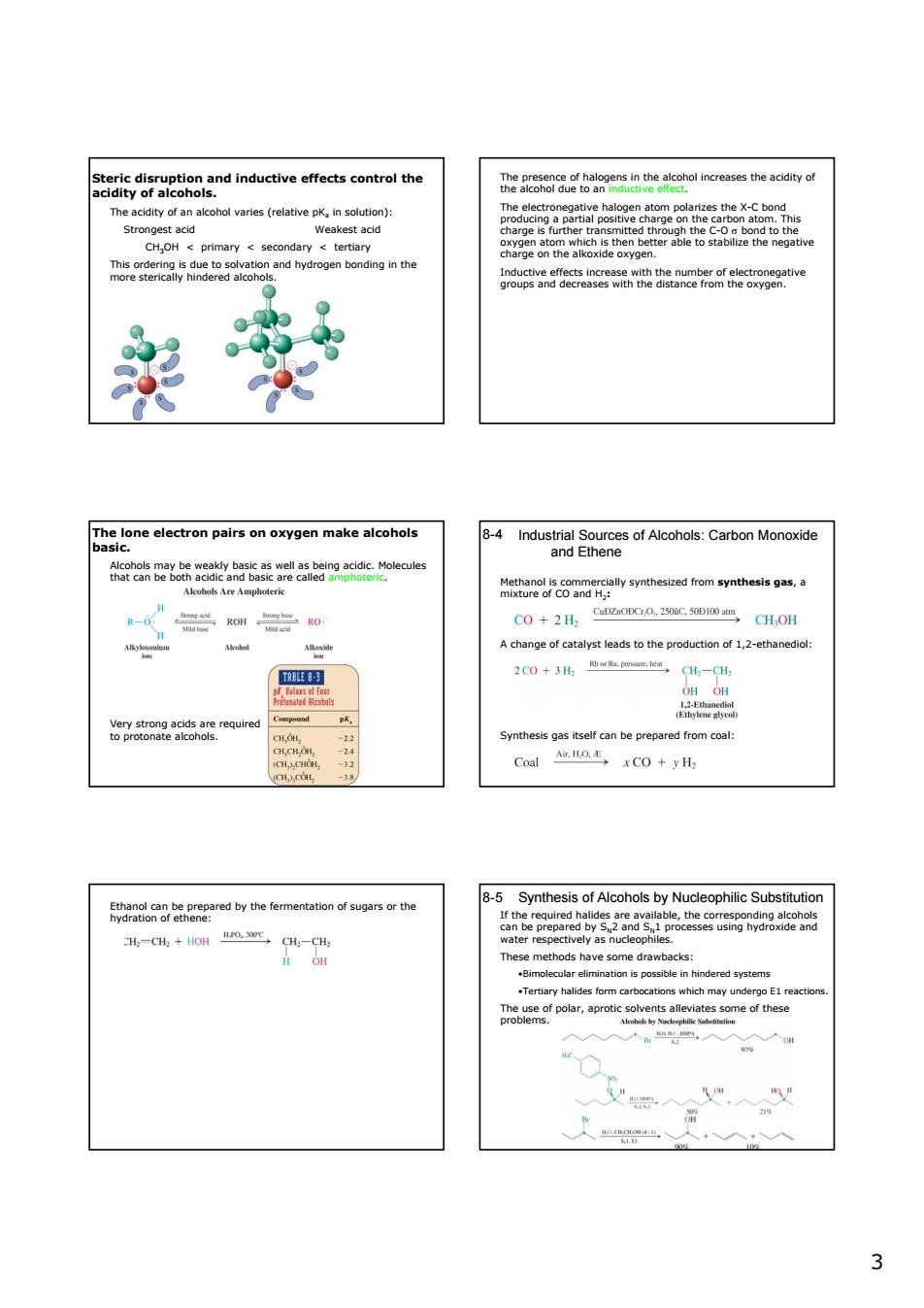正在加载图片...

SgaiSvaraeoRoandnducdtweefecscontrolthe enthelhrthe y of ty of an alcohol varies (relative pk in solution om wi hnctgneatthteateoeaooeat The lone electron pairs on oxygen make alcohols C0+2H CH.OH A change of catalyst leads to the production of 1.2-ethanedio 2C0+3 Synthesis gas itself can be prepared from coal: Coal.毛 xCO +yH: 3-5 Synthesis of Alcohols by Nuceophilic Substitution 33 Steric disruption and inductive effects control the acidity of alcohols. The acidity of an alcohol varies (relative pKa in solution): Strongest acid Weakest acid CH3OH < primary < secondary < tertiary This ordering is due to solvation and hydrogen bonding in the more sterically hindered alcohols. The presence of halogens in the alcohol increases the acidity of the alcohol due to an inductive effect. The electronegative halogen atom polarizes the X-C bond producing a partial positive charge on the carbon atom. This charge is further transmitted through the C-O σ bond to the oxygen atom which is then better able to stabilize the negative charge on the alkoxide oxygen. Inductive effects increase with the number of electronegative groups and decreases with the distance from the oxygen. The lone electron pairs on oxygen make alcohols basic. Alcohols may be weakly basic as well as being acidic. Molecules that can be both acidic and basic are called amphoteric. Very strong acids are required to protonate alcohols. Industrial Sources of Alcohols: Carbon Monoxide and Ethene 8-4 Methanol is commercially synthesized from synthesis gas, a mixture of CO and H2: A change of catalyst leads to the production of 1,2-ethanediol: Synthesis gas itself can be prepared from coal: Ethanol can be prepared by the fermentation of sugars or the hydration of ethene: 8-5 Synthesis of Alcohols by Nucleophilic Substitution If the required halides are available, the corresponding alcohols can be prepared by SN2 and SN1 processes using hydroxide and water respectively as nucleophiles. These methods have some drawbacks: •Bimolecular elimination is possible in hindered systems •Tertiary halides form carbocations which may undergo E1 reactions. The use of polar, aprotic solvents alleviates some of these problems